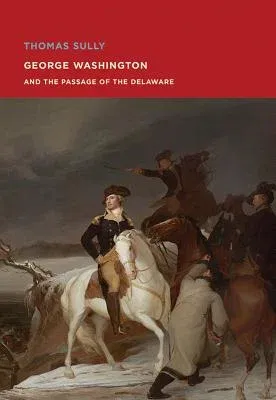On the night of December 25, 1776, George Washington led his ragged
Continental Army through a snowstorm across the Delaware River, on the
way to a surprise attack in New Jersey that would turn the tide of the
American Revolution. More than 40 years later, the ambitious young
painter Thomas Sully chose this dramatic moment as the subject of a
portrait of the founding father commissioned for the North Carolina
State House. He combined careful research into contemporary visual and
written sources, compositional models drawn from heroic portrayals of
the kings and emperors of Europe and American history paintings, and his
own flair for theatricality to create a monumental panorama in a new
mode that he called a "historical portrait." In it, a dramatically
lighted Washington urges on the troops from the back of a magnificent
white steed, surrounded by fellow generals and aides, while his troops
contend with the wintry river crossing below, as dawn breaks on the
horizon.
"The Passage of the Delaware," the first large-scale painting of this
iconic moment, was created in the early years of the burgeoning cult of
George Washington, when artists, writers and politicians evoked the
heroic deeds of the founding fathers, and particularly their wartime
exploits, to foster a sense of national purpose and unity. This compact
introduction to the painting reveals how Sully's imagination, technique
and ambition came together to embody the drama of the Revolution and the
character of its leaders in a manner that inspired viewers of its time
and is still stirring today.

